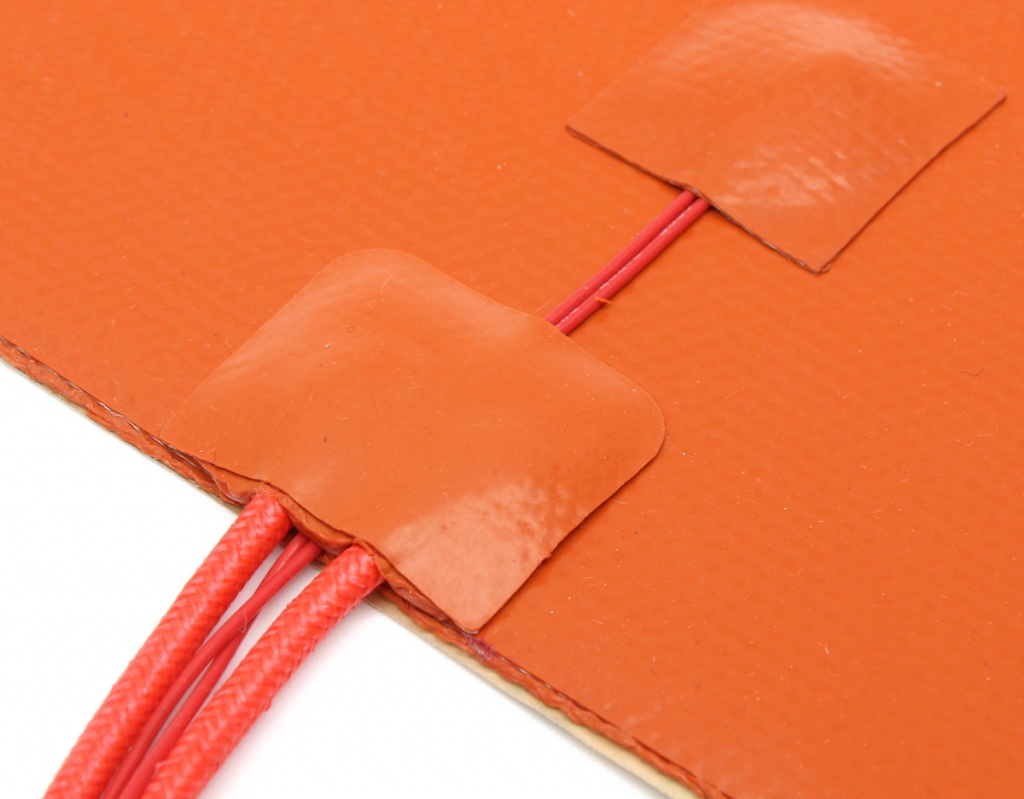Silicone rubber heaters have specific advantages over polyimide heaters even though the internal resistive foil may be similar. Silicone rubber offers excellent wear safety from mechanical damage and abrasion if the heater is installed in a section where it is likely to make contact with other objects. It also provides a humidity barrier to allow the radiators to be used in wet and outdoor environments. The temperature range of silicon rubber heaters is higher, giving function up to 455F for continuous utilization.
However, a negative aspect is introduced by the thicker silicone rubber. A degree of thermal insulation into the thermal transfer from the resistive foil to the mounting section is injected by the added properties and thickness of silicone rubber. Compared to polyimide, this stalling of thermal transfer can have an impact in some applications where fast thermal ramp-up is required. This thickness also decreases the flexibility or bending of the heater. With a small bend radius in the order of 1.5”, this introduces the capability for the heater to not permanently, securely, and uniformly bond to a knightly curved surface.
Silicone rubber heaters can be custom designed to various sizes and shapes, varying from 1” X 1” to 18” X 24”. If larger quantities are required, then changing to a wire element from an etched element would be needed. The overall average thicknesses are 0.030” (etched material) to 0.056” (wire wound). The wiring circuit is joined to power leads with a solder gun and then vulcanized between two silicon layers of rubber. This results in a full homogenous unit. The silicone serves as a moisture barrier to allow for operation in outdoor and wet environments. It also offers protection from physical harm such as scuffing or scrapping. Silicone is chemical resistant to some chemicals as well.
You can also find multiple heating elements for silicone heaters such as Inconel600, CuNi44, and stainless steel 304, with operating environments between -70oF and 392oF. They also have excellent dielectric properties. You should note that silicone heaters have a transfer delay from the wire or resistive foil to the mounting surface.
Types of Silicone Rubber Heaters
- Wire-Wound Heaters
These silicone rubber heaters use resistance wire to ensure excellent physical strength and uniform heat profile. The wire-wound elements are laminated between silicone rubbers. This technology is used in a larger size or lower volume applications as it more comfortable to conform to the shape and size of the form. It is also easier to avoid cutouts and holes or to concentrate the heat profile in specific sections of the heater as needed. Wire-wound design is a solution to the etched foil technology or limitations.
- Etched Foil Heaters
These heaters use chemically etched circuits which are laminated between thin silicone sheets to offer faster heat exchange properties for applications that need efficient temperature control. These circuits require more width to match wire resistance. Traditionally, an etch process was used in printed circuit boards to provide tight spacing control. This technique reduced element spacing to about 0.004”.
Conclusion
There are numerous applications in a variety of industries, be it food service or medical, which can profit from the heating potential of a personalized silicone heater.
